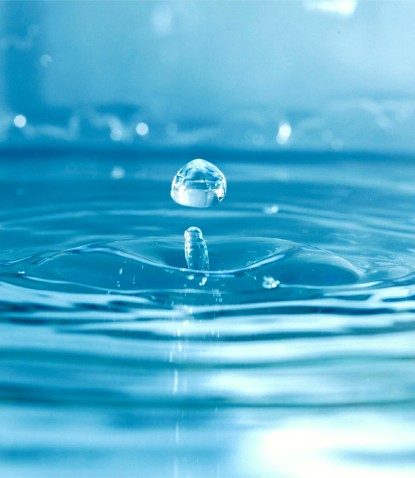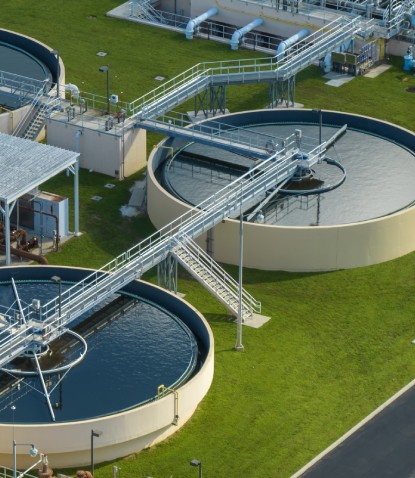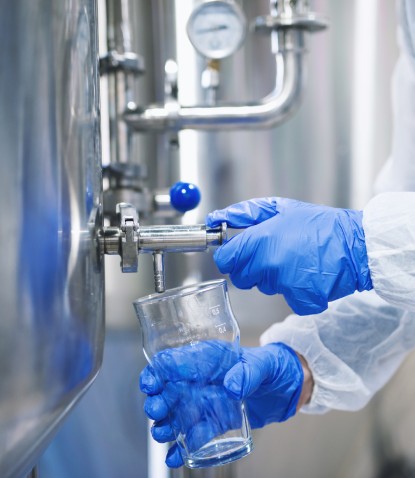In this way the Acticontact system permits the treatment of waste water in a simple and efficient manner. While being passed through the porous filling material, BOD substances in the water are fed on and decomposed by bacteria, which collect on the surfaces and in the pores of the filling material. Thus, Acticontact can take exceedingly high BOD loadings. What is more, Acticontact compares very favorably with other types of systmes in the efficiency of the elimination of BOD at the same degree of BOD loading.
Actilite is a porous filling material with a large surface area. Actilite is available in several different types. A suitable type is selected depending upon the nature of waste water to be treated.
The conventional activated sludge process can take BOD loadings of 0.3 to 1.0 kg/m3/day. By contrast, Acticontact is capable of coping with BOD loadings as high as 3 to 17 kg BOD/m3/day. This means that Acticontact requires an oxidation contact area as low as one third to one tenth that of the activated sludge process. Likewise, Acticontact provides much larger effective surface areas than the biological disc filters. Consequently, Acticontact requires a munimum of equipment cost and installation space.
Actilite has effective surface areas as high as 200 to 500 m2/m3. Since bacteria or MLSS collect not only on the surface of the filling material but also in its voids, the amount of MLSS on Actilite is as large as 10,000 to 15,000 mg/liter. Consequently, the purification efficiency of Acticontact is very high. What is more Acticontact can well cope with substantial variations in BOD loading and pH, as well as any other changes in the operating conditions.
Since bacteria are fixed on the filling material, there is no need for sludge retrun and there are not any such problems as bulking which are inherent in the conventional biological processes.
The surface of the biological film of Acticontact is in the aerobic state while its interior suface is in the anaerobic state. This anaerobic state contributes to the autotrophy of sludge. What is more, the sludge life is longer due to higher sludge concentrations in the reactor tank, and the longer food chain formed by many species of microorganisms results in a smaller volume of sludge generated in the tank.
More specifically, the volume of sludge generated in the Acticontact reactor is one half to one third that generated in the conventional activated sludge process.



Be part of the change
Get involved
Stay connected
Take action today
Make the world green
Head Office:
Organo (Thailand) Co.,Ltd. 89/1 Kasemsap Building 6th Floor Viphavadi Rangsit Rd. Chom Phon Chatuchak Bangkok 10900